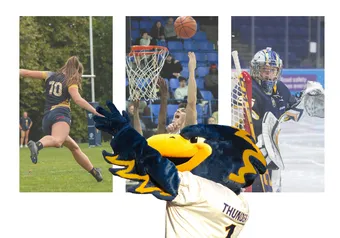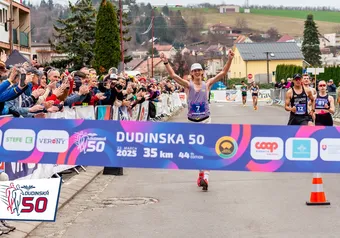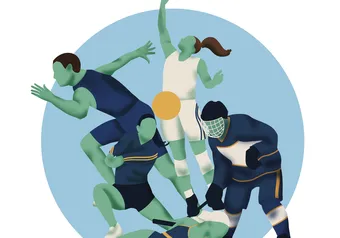On a campus as vast as UBC, it can be difficult to quantify where students are from. But when it comes to our Thunderbird athletes, you don’t need to wonder anymore.
The Ubyssey broke down where varsity athletes hail from.
According to UBC, 28.6 per cent of UBC Vancouver students are from outside of Canada. However, international students only make up seven per cent of Thunderbird varsity athletes.
“It is a little bit noticeable that there aren’t as many international kids [playing varsity],” said Tenniel Cowne, a third-year rugby player from the UK.
After moving to Vancouver, Cowne noticed that many of his rugby teammates had either played with or against each other.
“There was already this Canadian group of friendly faces,” said Cowne. “And I was kind of outside that.”
Generally, cross-country yields the most international athletes proportionally, followed closely by rugby and soccer. Ice hockey, volleyball and basketball have the lowest percentage of international athletes.
But on all teams, international athletes comprise less than 20 per cent — a noticeable difference from UBC’s general student population’s makeup.
However, when compared to the number of individual athletes, as opposed to the percentage of the team, rugby takes the top seed. Soccer maintains its second place spot and track and field rounds out the podium.
In terms of unique countries, rugby is the most country-diverse sport, with nine countries represented, followed by soccer with five. Six sports are only made up of two countries, five of which are only made up of athletes from Canada and the United States.
T-Birds basketball is the outlier, with athletes from Canada and Germany.
Despite the statistics, the biggest pattern is not something data and charts can really analyze. It seems that the beauty of Vancouver — with its mountains, ocean and outdoorsy culture — recruits athletes earlier than UBC Athletics does.
“I mainly came over because of Vancouver itself, the city, for the opportunities with the skiing mountains nearby and the outdoors activities I could do,” said Cowne.
Vancouver’s appeal extends across the country, as well. Out-of-province athletes make up 39 per cent of domestic athletes.
“I fell in love with the city. I fell in love with the environment, the oceans and the mountains and for a really long time I had dreamed about going to UBC,” said Sage Stoyka Kay, a pole vaulter on the women’s track and field team. She is from Toronto, but after visiting family in Vancouver during summer vacations, UBC became the goal.
“I was actually accepted as a student first, and then reached out to [the head coach].”
Like Stoyka Kay, most out-of-province athletes come from Ontario, followed by Alberta and Manitoba. There are currently no varsity athletes from Northwest Territories, Newfoundland and Labrador, Prince Edward Island or Nunavut.
Football and swimming have the most provincial diversity among athletes, each representing seven different provinces and territories. Softball has the least provincial diversity, representing only two.
Volleyball and football are the sports with the most equal distribution among provinces, both with only 44 per cent of the team hailing from BC. Although there is some diversity, the most dominant province for every sport at UBC is BC.
Rugby, field hockey and softball are the sports with the largest percentage of athletes hailing from BC. Football, volleyball and hockey have the lowest percentages of BC athletes.
A potential explanation from Stoyka Kay is the difference between BC’s training conditions and other climates. There’s a difference between outdoor and indoor training facilities, especially for predominantly outdoor sports like rugby and softball.
“Because of the weather and the temperatures, [track and field] is a sport that can be in BC done outdoors all year. Whereas if you’re going ahead to Ontario, there has to be indoor training facilities,” she said. “You have to take those factors into consideration.”
Of the Thunderbird athletes who grew up in BC, 70 per cent hail from the Metro Vancouver area.
The most common hometown is Vancouver. North Vancouver and Surrey round out the top three.
For Vicarte Domingo, a third-year baseball pitcher from Vancouver, it makes sense for athletes to stay local.
“Vancouver is one of the most beautiful cities, if not the most beautiful city, I’ve ever been to,” said Domingo. “The culture here is amazing.”
Domingo also praised how well athletes are treated at UBC. “This new lululemon deal has been sick,” he said. “You don’t really see that at any other school.”
He also noted that staying close to family and the connections he’d built through the UBC Thunder program — a baseball team for high school students to develop their skills for university — as a major influence to stay in Vancouver.
“If you’re able to stay close to home or at home, why wouldn’t you?” said Domingo.
Regardless of which city you call home, Stoyka Kay urges prospective varsity athletes to talk to coaches.
“It’s worth a shot to try and reach out and start those conversations,” said Stoyka Kay. “You never know where it can go.”
Share this article
First online






